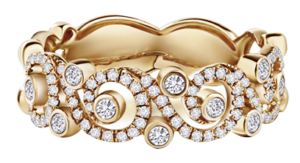Introduction
When exploring the world of gold jewelry, understanding the differences between 24k gold, 18k gold, 14k gold, and 10k gold is essential. These terms represent the purity levels of gold and play a significant role in jewelry selection, both for consumers and designers.
1. 24k Gold – The Purest Form
24k gold is synonymous with 100% purity. This level of purity gives 24k gold its distinct bright luster and high value. However, the softness of 24k gold makes it less ideal for jewelry that’s worn daily, as it can easily deform or scratch.
2. 18k Gold – Perfect Blend of Purity and Practicalit
18k gold, comprising 75% gold, strikes a balance between the lustrous appeal of pure gold and the practicality needed for regular wear. This makes 18k gold jewelry a popular choice in premium markets, especially for engagement rings and wedding bands.
3.14k Gold – Durable and Fashionable
With 58.3% gold content, 14k gold is favored for its durability and affordability. It’s a prevalent choice in Western countries for crafting fashionable, everyday jewelry pieces that withstand regular use.
10k Gold – Affordability with Style.
4. 10k–the most economical choice.
10k gold contains 41.7% gold, making it the most economical choice. While it offers a budget-friendly option, 10k gold jewelry may be more susceptible to wear and color changes over time due to its lower gold content.
5. Color Variations in Gold Jewelry
Both 14k and 18k gold come in various colors like white and rose gold, catering to diverse aesthetic preferences. This is achieved through alloy combinations and plating techniques.
Conclusion
Choosing between 24k, 18k, 14k, and 10k gold requires understanding their purity, wearability, aesthetics, and cost. This knowledge ensures that you make a well-informed decision when selecting gold jewelry, aligning with your personal style and needs.

